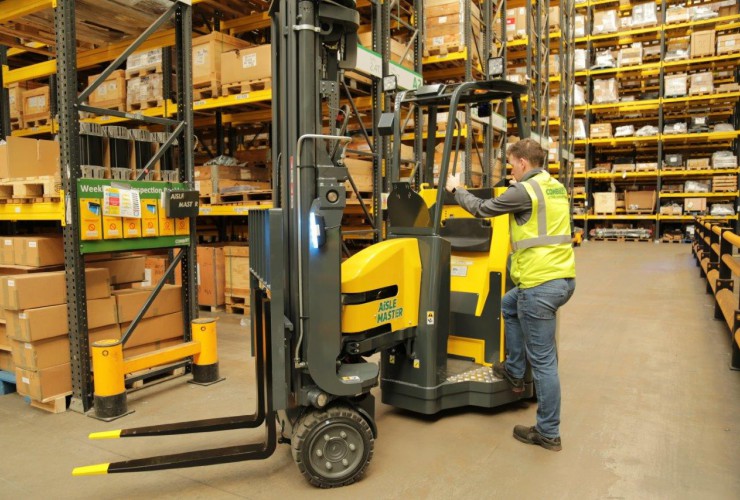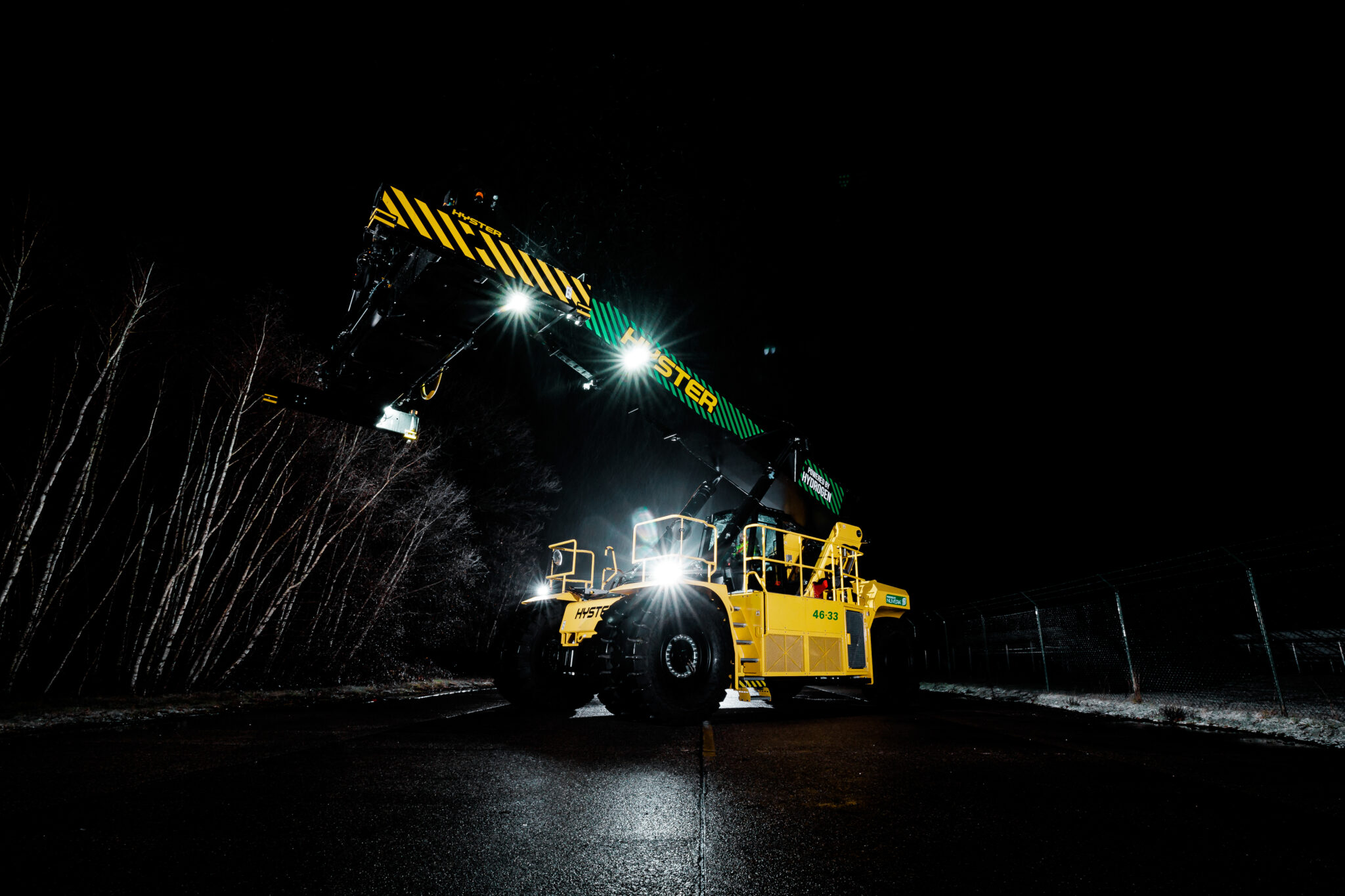In the run-up to the IFOY Award ceremony in Dortmund on June 22nd, Logistics Business features all the 2023 finalists and shares the verdict from the IFOY test conducted during the evaluation by an expert jury in March. Today’s entry is the Aisle Master OP from Combilift.
Category: Warehouse truck “highlifter”
IFOY test verdict:
Combilift is in the final of the IFOY AWARD with the Aisle Master OP, in short AME-OP. The order picking truck with articulated mast has been developed for use in narrow aisles and is available with load capacities of 1.5 to 2 tons and lift heights of up to 12.1 meters.
The concept of the Aisle Master is not new. The articulated mast truck was once introduced as an alternative to reach trucks. Thanks to its unique steering and drive system, its striking appearance is definitely advantageous in narrow aisles. Compared to the average reach truck, the aisle width can be as much as 80cm narrower. In some cases, the Aisle Master even performs his work in aisles no wider than 1.75 meters. The concept is particularly popular in the UK, but articulated mast trucks are also used elsewhere.
With the Aisle Master OP, Combilift offers a new application for this type of truck. OP stands for Order Picker, and this is exactly what the IFOY truck is designed for. Since the operator must get on and off the truck regularly to pick orders, the cab is equipped with a stand-up seat. A comfortable cushion supports the operator while driving and the high position allows a good view of the load and direction of travel.
During the test drive, it is evident that the operation of the Aisle Master takes some getting used to. Loading and unloading pallets requires both steering and driving movements. Joystick operation for driving is a combination of moving the joystick and pressing “unlock” for driving. Steering is relatively predictable thanks to the new steering system, which uses a hydraulic cylinder and chains for overall control.
The low, obstacle-free entry and exit of only 280mm allows easy and safe entry with one step on either side of the truck. Picking works faster this way than if the operator has to hop on and off from a seated position. However, to enter and exit on the right side, the joystick controls must first be raised
This multifunctional, programmable joystick control ̶ for all hydraulic functions and traction ̶ replaces the mechanical levers of the “normal” Aisle Master. The joystick is adjustable and allows a comfortable and ergonomic working position for operators of all sizes.
The display is also different. The touch display of the Aisle Master OP shows all important forklift information briefly.
IFOY test verdict: The Aisle Master OP is the first stand-up order picker with an articulated mast. The stacker can also be used as a high lift truck or reach truck in narrow aisles. However, smooth operation requires an experienced operator. In this case, effective pallet handling in very narrow aisles can be achieved with the Aisle Master.
IFOY Innovation Check
Market Relevance: The new Aisle Master OP by Combilift represents a considerable improvement compared to similar products and previous models, whereby a high market relevance is seen for the markets in which articulated forklifts are established. The change to a continuous stand-on platform in particular creates the possibility of order picking from both sides. Thus, the range of applications expands significantly, and this creates a high level of attractiveness for replacement or new purchases of such trucks.
Customer Benefit: Customers benefit from the Aisle Master OP due to its versatility of application possibilities in the narrowest of indoor and outdoor spaces. Storage and retrieval in the narrowest aisle widths from 1,750mm with the possibility of picking at the same time. Thus, the benefit also undoubtedly lies in maximising the utilisation of storage space and increasing the efficiency of storage processes.
Novelties / Innovations: The basic principle of the articulated forklift remains the same with the Aisle Master OP and is extended by the variant with a continuous standing platform as well as the new type of steering via crossed chain. The possibility of fast access from both sides and the basic possibility of order picking is a novelty for this type of industrial truck. However, truly effective order picking from different rack locations on pallets is only possible with order-picking forklifts designed directly for this purpose.
Functionality / Type of Implementation: The Aisle Master OP has a very robust and exemplary design and surprises with its high stability despite the articulated arm principle. The overall impression suggests a long service life. Storing and retrieving is very precise due to the driven front wheels in a very confined space, although some practice is required with regard to the somewhat complex operation.
Verdict: A candidate that will inspire the target group in its market.
Market relevance +
Customer benefit ++
Novelty / Innovation Ø
Functionality / Type of implementation +
[KEY: ++ very good / + good / Ø balanced / – less / — not available]











